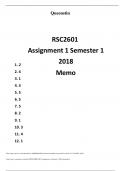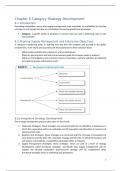Master Program
Summary Empirical Finance
Part I
Supervisor:
Author:
de Bresser, J
Rick Smeets
Melenberg, M
October 19, 2024
,Table of Contents
1 The Efficient Market Hypothesis 5
1.1 The Random Walk Hypothesis . . . . . . . . . . . . . . . . . . 5
1.2 You Cannot Beat the Market . . . . . . . . . . . . . . . . . . 5
1.3 Prices are Right! . . . . . . . . . . . . . . . . . . . . . . . . . 6
1.4 Prices are Right? . . . . . . . . . . . . . . . . . . . . . . . . . 7
2 Market Prices are Right! 8
2.1 Arbitrage, Fundamental Values and the FTAP . . . . . . . . . 8
2.1.1 Single-Period Arbitrage Opportunities . . . . . . . . . 8
2.1.2 The Fundamental Value . . . . . . . . . . . . . . . . . 10
2.2 Testing the Efficient Market Hypothesis . . . . . . . . . . . . . 12
2.3 Active Fund Management . . . . . . . . . . . . . . . . . . . . 14
3 Linear Regression 15
3.1 Estimation via OLS . . . . . . . . . . . . . . . . . . . . . . . . 17
3.1.1 Consistency of the OLS Estimator . . . . . . . . . . . . 17
3.1.2 Accuracy of the OLS Estimator . . . . . . . . . . . . . 18
3.2 Linear Regression for Time Series . . . . . . . . . . . . . . . . 19
3.2.1 Accuracy of the OLS Estimator in Time Series . . . . . 20
3.3 Predictability of Stock Returns . . . . . . . . . . . . . . . . . 21
3.3.1 Overlapping Samples and Long Term Returns . . . . . 23
4 Capital Asset Pricing Model (CAPM) 24
4.1 Model Formulation and the SDF . . . . . . . . . . . . . . . . 25
4.2 The CAPM . . . . . . . . . . . . . . . . . . . . . . . . . . . . 26
4.2.1 Analyzing Arbitrage Opportunities . . . . . . . . . . . 30
4.2.2 Excess Returns . . . . . . . . . . . . . . . . . . . . . . 31
4.3 CAPM: Testing . . . . . . . . . . . . . . . . . . . . . . . . . . 32
5 The Hansen-Jagannathan Bound and Multi-Factor Models 36
5.1 The Hansen-Jagannathan Bound . . . . . . . . . . . . . . . . 36
5.2 Predictions and Implications . . . . . . . . . . . . . . . . . . . 37
5.3 Multi-Factor Models . . . . . . . . . . . . . . . . . . . . . . . 39
5.3.1 Multi-Factor Models: Testing . . . . . . . . . . . . . . 39
5.4 Evolution of Multi-Factor Models . . . . . . . . . . . . . . . . 40
5.4.1 How To Find Appropriate Factors? . . . . . . . . . . . 41
1
, 5.5 Performance Measures . . . . . . . . . . . . . . . . . . . . . . 42
5.5.1 Measure of Performance . . . . . . . . . . . . . . . . . 43
5.5.2 Why do actively managed mutual funds persist? . . . . 43
6 GMM Estimation 44
6.1 Estimation SDF CAPM . . . . . . . . . . . . . . . . . . . . . 44
6.2 Setting up moment conditions . . . . . . . . . . . . . . . . . . 45
6.3 Just-identified and over-identified . . . . . . . . . . . . . . . . 45
6.4 Asymptotics . . . . . . . . . . . . . . . . . . . . . . . . . . . . 49
6.5 Making the most of over-identification . . . . . . . . . . . . . 51
6.5.1 Hansen J-test . . . . . . . . . . . . . . . . . . . . . . . 52
7 Variation in Risk Premia over Time 53
7.1 The Setting . . . . . . . . . . . . . . . . . . . . . . . . . . . . 53
7.2 The Regression Model . . . . . . . . . . . . . . . . . . . . . . 54
7.3 The Unifying Framework . . . . . . . . . . . . . . . . . . . . . 55
7.3.1 Consumption Habit Models . . . . . . . . . . . . . . . 55
7.3.2 Rare Disaster Models . . . . . . . . . . . . . . . . . . . 56
7.3.3 Intermediary Models . . . . . . . . . . . . . . . . . . . 57
7.3.4 Heterogeneous Agent Models . . . . . . . . . . . . . . . 57
7.3.5 Behavioral Asset Pricing Models . . . . . . . . . . . . . 58
8 Intermediary models 59
8.1 Traditional Consumption-Based Models vs. Intermediary Mod-
els . . . . . . . . . . . . . . . . . . . . . . . . . . . . . . . . . 59
8.1.1 The Model . . . . . . . . . . . . . . . . . . . . . . . . . 60
8.2 Asset Prices with and without Frictions . . . . . . . . . . . . . 62
8.3 Intermediary Factor Models . . . . . . . . . . . . . . . . . . . 64
8.3.1 The Setting . . . . . . . . . . . . . . . . . . . . . . . . 64
8.3.2 Market Equilibrium . . . . . . . . . . . . . . . . . . . . 65
8.3.3 The λβj -form . . . . . . . . . . . . . . . . . . . . . . . 67
8.4 Empirical Evidence . . . . . . . . . . . . . . . . . . . . . . . . 68
8.4.1 Cross-Sectional Asset Pricing Test . . . . . . . . . . . . 69
9 Climate Finance 70
9.1 Climate Risk in Macrofinance . . . . . . . . . . . . . . . . . . 70
9.2 Asset Pricing and Risk Premium . . . . . . . . . . . . . . . . 72
9.2.1 Risk Premium when Climate Risk is Dominant . . . . 73
2
, 9.2.2 Risk Premium when Economic Uncertainty is Dominant 73
9.2.3 Term Structure of Risk Premia . . . . . . . . . . . . . 74
9.3 The DICE Model . . . . . . . . . . . . . . . . . . . . . . . . . 75
9.3.1 Risk versus Uncertainty . . . . . . . . . . . . . . . . . 77
9.4 Empirical Asset Pricing . . . . . . . . . . . . . . . . . . . . . 77
9.4.1 Empirical Approach 1: Time-Series . . . . . . . . . . . 78
9.4.2 Empirical Approach 2: Panel Regressions . . . . . . . . 78
9.4.3 Asset Returns and Carbon Risk . . . . . . . . . . . . . 79
9.4.4 Time Series Models Based on Cross-Section Regressions 80
9.5 Contrasting Evidence . . . . . . . . . . . . . . . . . . . . . . . 81
3











